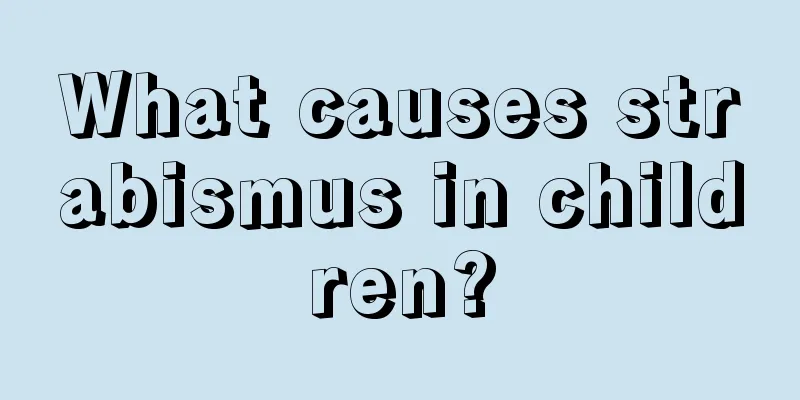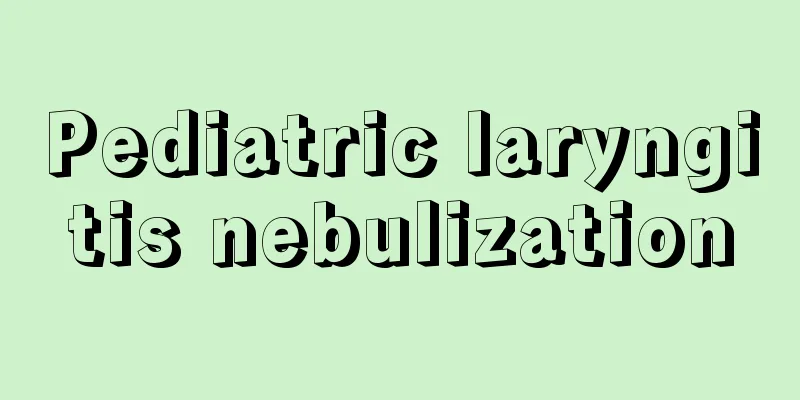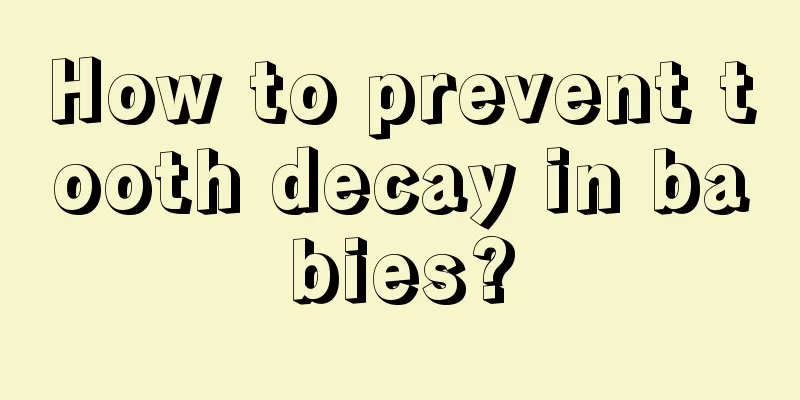What causes strabismus in children?

|
Literally speaking, it means that the child's eyes cannot look at one thing at the same time, and the pupils of the eyes will often shift to the middle, which is what we usually call cross-eyes. This is because there is a problem with the external muscles of the eyes. There are many factors that can lead to strabismus, which is very complicated. It is usually congenital and exists at birth. There seems to be no more effective method except surgical treatment. Symptoms of esotropia The main manifestation of esotropia is that the pupils in the middle of the eyes are naturally or artificially moved closer to the middle, looking like two chickens fighting, so it is also called cross-eyes or crossed eyes. When a normal person looks at the same object with both eyes, images of the object are formed on the retinas of both eyes and overlap in the visual center of the brain to become a complete, three-dimensional single object. This function is called binocular single vision. However, infants and young children are easily affected by external factors during the process of developing binocular single vision, causing one eye to focus on a target while the other eye deviates and cannot look at the same target, thus resulting in strabismus. Causes and pathology of esotropia The formation of strabismus is divided into congenital strabismus and acquired strabismus according to the age of onset. Strabismus that develops within six months after birth is called congenital strabismus. Strabismus is related to genetic factors. Investigations have found that some congenital strabismus is hereditary. Not only children have strabismus, but parents or grandparents also have the same strabismus. Research from Hefei Pure Eye Hospital believes that strabismus is a multi-gene inheritance, so the incidence of the disease in the family is not very obvious. Strabismus that occurs after six months of age is called acquired strabismus. This type of strabismus usually develops and worsens gradually. Esotropia is common in children with high hyperopia. Due to high hyperopia, both distant and near vision are not clear. When it is difficult to see things close up, the eyes need to make height adjustments in order to see clearly. Height adjustments will produce over-convergence, thus causing esotropia. Myopic eyes often do not need to adjust when looking at close objects, which results in convergence insufficiency and often causes exotropia. Some children have amblyopia in one eye and cannot focus with both eyes. Over time, the amblyopic eye develops exotropia due to long-term disuse. This situation is particularly likely to occur in children because the brain's fusion function is still relatively fragile and unstable, or has not yet reached perfection and consolidation, and amblyopia can cause fusion function disorders, resulting in strabismus. In clinical practice, if children have anisometropia or high refractive error, they cannot form binocular vision and have no fusion function, which will eventually lead to strabismus. This is a very common cause of strabismus. Treatment and correction of esotropia The treatment methods for esotropia vary depending on the type of strabismus and can generally be divided into surgical treatment and non-surgical treatment. (1) Surgical treatment is to adjust the strength of the external eye muscles and the position of their attachment points to restore the eye position to normal. Congenital esotropia and strabismus usually require surgical treatment. Non-accommodative and large strabismus also usually needs to be corrected by surgery. (ii) Non-surgical treatment: Not all strabismus require surgical treatment. If it is accommodative esotropia, it can be corrected by wearing appropriate hyperopia glasses or bifocals. If there is moderate or high refractive error, glasses are often needed for correction. In addition, axial correction training can be used to help restore binocular single vision and increase image fusion ability. For example, training with a visual axis correction training machine, or wearing prism lenses...etc. If there is also amblyopia, amblyopia training is also an indispensable treatment. |
<<: My child's testicles hurt, what's wrong?
>>: What are the symptoms of handsomeness disease?
Recommend
How to solve the problem of 3-year-old baby grinding teeth at night
We all know in our daily lives that as parents, i...
The child snores and has phlegm when sleeping
Children's physical resistance is relatively ...
What toothpaste is good for a three-year-old baby?
When children are young, parents should cultivate...
What should I do if my child's face gets bruised?
Children are more naughty and active. When they c...
Causes of knee pain in children
We know that knees are of great significance to t...
Grandma's words almost cost the baby's life
According to media reports: On the second floor o...
Children swallowed fluoride on their teeth
Dental caries is a common dental disease among ch...
Capillary pneumonia in infants
Have you ever heard of capillary pneumonia? Do yo...
What to do if your child's palms and soles are hot
If parents are not careful about the change of se...
Can a one-year-old baby drink yogurt?
Many parents have doubts about whether one-year-o...
Fruits that two-year-old babies cannot eat
When babies are young, their stomachs and intesti...
How to teach your baby early in life when he is two months old?
When the baby is growing up, parents are most con...
What medicine is good for children with tonsil suppuration?
Most children are picky eaters and they are very ...
What kind of milk powder should babies eat for autumn diarrhea
Autumn is relatively dry and many people don’t li...
What should I do if my five-month-old baby has a fever of 37.7 degrees?
A five-month-old baby is not yet fully developed,...









